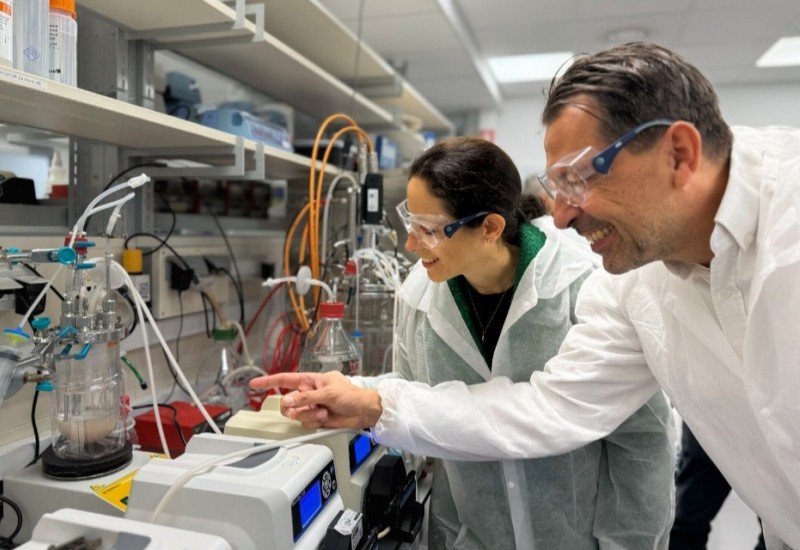Feature article - Critical challenges driving innovation in chemical logistics
David L. Buss, CEO of DB Schenker USA, looks at the key digitisation challenges in distribution
Chemical logistics has always been one of the most sensitive forms of logistics. With different influencers, it is more susceptible to instability and fluctuations that can have a ripple effect through the industry. This was made clear during the COVID-19 pandemic, which caused delivery delays and setbacks that impacted the healthcare industry amid the crisis. Some logistics companies rose to the challenge, transporting critical medical supplies and necessities all over the world.
As the world recovers from the disruption of the pandemic, there are still challenges that impact supply chains – especially in chemical logistics. Chemical products are used in most branches of industry. For some sectors, such as the pharmaceutical and automotive industries, they are time-critical and indispensable.
A functional chemical logistics system is key for suppliers, manufacturers and customers. Any change or delay in the supply chain can have a snowball effect, and with significant disruptions or downtime, the end customer could have serious problems. As a result, manufacturers and suppliers face enormous burdens and time pressure.
Key challenges
Intelligent and strategic planning and control of supply chains is vital for chemical logistics. These are the current challenges:
* Economic situation: Logistics are sensitive to the political and economic world situation. Tariffs, embargoes and crisis situations can create unstable conditions that complicate supply chain reliability
* Regulatory affairs: Legal requirements, such as customs and transport regulations, are an essential part of the process. Logistics companies need flexibility to adapt to these regulations without a loss of continuity
* Complexity: Demands on chemical logistics are considerable, from responsiveness and resilience to flexibility and agility. These skills are essential to maintaining robust supply chains
* Delivery capability: This is multifaceted. There can be difficulties in production, shortages of raw materials in the global market, or demand from customers requiring customised solutions
* Technological change: Digitisation is necessary for better communication and more agility for changes and disruptions. New technologies for the supply chain promote transparency, visibility, sustainability and networking logistics
Key digitisation technologies
Smart technology is seeing increased adoption across industries, including logistics. Smart devices for automation, robotics, remote fleet management and more are able to provide insights into shipments and vehicles in the transport network.
Automation is essential for staying flexible in shifting market conditions, which are a strong factor in chemical logistics. It can tackle mundane, repetitive tasks, freeing employees to focus on more crucial tasks that support operational agility. Automation can also reduce human error, which can compound the delays.
Supply chain efficiency and transparency is supported by technology like business intelligence, RFID and cloud-enabled GPS. These technologies provide real-time insights for rapid action, such as the locations of vehicles in the transportation network or inventory in the warehouse.
A digital thread refers to the use of digital tools and representations for design, evaluation and lifecycle management. This acts as a closed loop between digital and physical environments, allowing for the exchange of information between consumers and businesses.
The technology is not enough by itself, however. Workflows and people need to be part of the process to establish an integrated value chain that supports collaboration between customers and suppliers, providing better transparency and communication.
AI-powered systems and predictive analytics can help suppliers and manufacturers understand production schedules, pricing trends, customer demand patterns, and other factors they may not be able to monitor directly. This type of supply chain management takes a proactive approach to anticipate problems before they happen and develop strategies.
Optimising truck loads addresses a pressing challenge in the supply chain. The industry often relies on just-in-time inventory systems, making load optimisation challenging. Manufacturers and suppliers must make educated guesses, but with optimisation, shipments can be planned whenever possible to reduce overall costs and increase efficiency. This also applies to route optimisation, which creates a shipment plan based on available routes, timing constraints, and costs.
Shifting customer expectations and demands are a significant driver of supply chain obstacles, especially in chemical logistics. Customers are used to placing orders and receiving goods in a matter of days, often for free, and they expect that same level of service and speed from all businesses. They do not have a high tolerance for delayed shipments, long processing times, or delivery errors, especially when they are vital raw materials or necessary pharmaceuticals.
Consumers also want better customisation and supply chain transparency. Options like additive manufacturing and rapid prototyping allow manufacturers to restructure supply chains and adapt to changing demands. Supply chain flexibility is important for logistics and transportation as the challenges continue.
Demand-driven supply chain management has been a focus of logistics for a long time, but the improvements in data collection and analytics allow more agility to adapt to these demands in real time. IoT devices with sensors, machine learning and predictive analytics can be leveraged to collect, process and analyse information about the environment. With this data, businesses have comprehensive information to respond rapidly and adapt as conditions change.
Cybersecurity and risk have an impact on every industry, but with chemical logistics, the results can be devastating. Digitising the supply chain offers many benefits, but it also opens inherent vulnerabilities that cyber-criminals can exploit.
Logistics involves several parties that must work together, but just one party leaving a weak point in security can leave the entire network vulnerable to a breach. Suppliers, manufacturers and other partners have to be on the same page with security, and make it a priority across the ecosystem with end-to-end security measures. This shores up ingress points for all parties. The entire group must be committed to security and protocols that monitor and assess risk across the entire ecosystem as well.
Outlook
The challenges in chemical logistics are complex, especially with the ongoing effects of the pandemic. Suppliers and manufacturers can stay agile with strong third-party logistics partnerships and digitisation of the supply chain, which enables true end-to-end transparency, accurate forecasting and real-time insights.
Contact:
DB Schenker +1 800 225-5229 (in USA)
+1 602 458-6200 (outside USA)
https://www.dbschenker.com/















